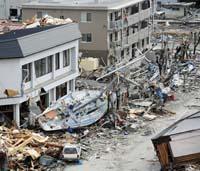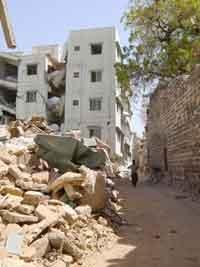Tectonics, residency carver
2011/06/01 Lakar Iraizoz, Oihane - Elhuyar Zientzia Iturria: Elhuyar aldizkaria
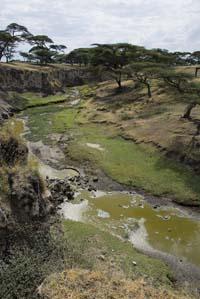
An article published in the March issue of the Journal of Human Evolution indicates that human ancestors, such as hominids of the species Australopithecus africanus, have found evidence for their implantation in tectonically active regions. In fact, the team of researchers from York University, Witwatersrand University (South Africa) and the Physique du Globe Institute in Paris claim to be adapted to the usual habitat mosaics in tectonically active regions.
These findings have been drawn from research conducted in Ethiopia. In fact, many remains of the Australopithecus and other pioneering hominids have been found. The location of human ancestor fossils and their characteristics as a result of tectonic movements have been analyzed.
In Ethiopia, and in general in the Rift Valley of East Africa, earthquakes and volcanoes are very frequent, as there are divergent boundaries between two tectonic plates: on the one hand, the plates of Africa and Arabia move away from each other and, on the other, evidence suggests that the blocks of Africa and Somalia are ever broken. In this rupture and distance from the continent, the earth's surface is aggravated, that is, normal faults are formed that sink some blocks and raise others. In this way, between the blocks are formed a lot of small valleys. Interspersed between the valleys, the unsunken pieces of surface form saws.
The international team of researchers explained how the water flow of a river changes if these fluctuations occur in the vicinity of a river: in the areas where the valleys have been formed the water and sediments of the rivers accumulate, while in the mountains terraces and canyons are formed.
In this way sedimentary basins and lagoons are formed, conditioned by enclosures and fencing formed by elevated blocks in the environment. Areas so rugged "could complicate the movement of runners mammals, while for primates, hominids and modern men would be passable," they say. Their presence in hostile environments also gave them "protection and security".
Lower link
Asked by Arturo Apraiz, tectonic expert and Arantxa Aranburu, researcher at Atapuerca, on this research, they have responded that the relationship between these two phenomena can be much less. "It cannot be said that they chose tectonically active areas to establish their settlements," says Apraizek. And they are done on a very different scale."
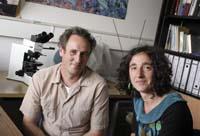
The topographical characteristics referred to in the article "it is not enough that one or two earthquakes occur," explains Apraiz. It takes hundreds of earthquakes and thousands of years to make such changes. Earthquakes gradually modify the characteristics of an unstable territory. And then human beings settle in a place where there are proper characteristics. The hominids of that time did not know, they could not know where the wealth comes from. On the other hand, in addition, other places with many earthquakes would not be suitable for the human ancestors of the time and I am sure that they did not stay there. And on the contrary, if adequate living conditions were created elsewhere without tectonic influence, they would also apply there."
In fact, as Arantxa Aramburu, the man, and human ancestors said, "have not been attached to a single ecological niche. We have adapted to live in all conditions, from the snow of cold times to the arid places of the desert. Retrospectively, the deposits have been found in environments of varied climates: savannas, tundras, half of the forest... Maybe we weren't like that (they say we're from savannah), but then we managed to adapt."
Aranburu adds another argument in this matter: "In the Rift Valley of East Africa many remains of our ancestors have been found, on the one hand, because they were there, but on the other, because the sedimentation conditions are very suitable. Then what was there has been preserved. Perhaps elsewhere there were populations of the same time, but the conditions have not been adequate and have not been preserved."
Aramburu recalled that it has passed to the fossil record "less than 1%" of all human beings that have existed: ... "From this little bit we try to understand everything else. And sometimes we forget that there has been a story that has not been kept.
Richness thanks to tectonics
Aside from the alleged link between human ancestors and tectonics, both experts agree with the habitat richness described in the Journal of Human Evolution. As the Rifta is, by definition, a heavily sunken zone compared to the surrounding blockages, "in Africa, for example, it reduces a very arid climate in itself," says Apraiz. "The rift also caused the formation of lakes. Therefore, in this unlivable climate, more appropriate corners appeared," added Aramburu.
Habitat wealth has also grown in this African region since the foundation of the rift. In the valley above the Rifta is a savanna-type vegetation, while on the slope of the rif bottom to this valley there are numerous forest areas. "Keep in mind that in a very small space there is a height difference between 2,000 and 2,500 meters," says Apraiz.
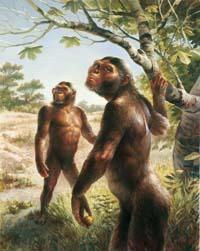
In addition to creating unique ecological niches in a given area, plate movements cause larger scale phenomena on Earth, such as climate change. For example, "the border of the Pleistocene coincides approximately with the time when Central and North and South America appeared," explains Aramburu. It was creating what was now Central America, and when the two subcontinents joined together they changed the marine currents, "before the currents went between North and South America," he says. In fact, "in the climate equation many variables intervene, and one of them is geology. Sometimes it's a very important variable."
In the Mediterranean, Apraiz mentioned another change related to tectonics: "40 million years ago the Mediterranean dried up completely, which caused major changes. The Cape of Gibraltar closed due to tectonic movements, preventing water from entering from the Atlantic Ocean. Since the water coming from the rivers and the rain was less than that which evaporated, between 100,000 and 200,000 years it dried up completely. Later, with another movement the cape spread and, as recently announced, it seems that there was a terrible tsunami throughout the Mediterranean coast. The water got into the ramp like a waterfall."
On the other hand, and although not all of them are directly related to tectonics, the phenomena associated with geology configure the natural steps, that is, the low-relief corridors that are formed in the orography of a certain environment. These steps are "very beneficial to living beings, since they use them as ways of migration and dispersion. They are natural highways," explains Aramburu.
Life on Earth would not have been the same without structures, formations, phenomena and changes produced by tectonic movements. They have a great influence on local life and life. And it can also be contradictory on what scale it looks. For Apraiz and Aramburu, the Japanese earthquake and tsunami are a good example: "In Japan there has been a brutal earthquake, the tsunami has caused devastation on the coast, Japan itself has moved up to two meters... but the change in the landscape, apart from human infrastructure, has been nothing."

Gai honi buruzko eduki gehiago
Elhuyarrek garatutako teknologia



